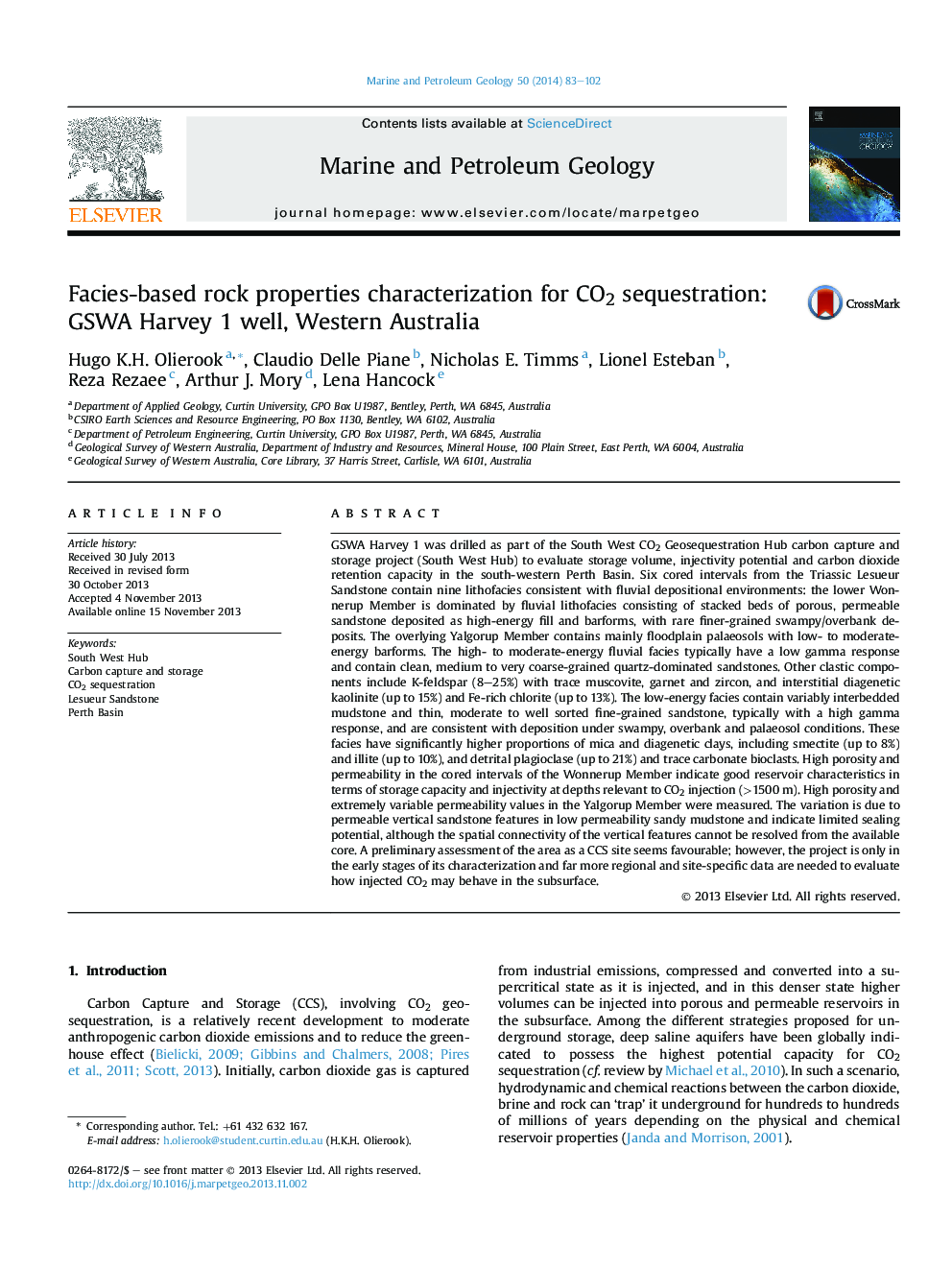| کد مقاله | کد نشریه | سال انتشار | مقاله انگلیسی | نسخه تمام متن |
|---|---|---|---|---|
| 4695672 | 1637174 | 2014 | 20 صفحه PDF | دانلود رایگان |

• GSWA Harvey 1 is the first carbon capture exploration hole in Western Australia.
• Six cored intervals from the Triassic Lesueur Sandstone contain braided fluvial facies.
• The targeted seal contains mixed-facies, the reservoir consists of homogeneous sandstone.
• Porosity and permeability is variable in the seal and high in the reservoir.
• Preliminary assessment suggests CCS is favourable in the area.
GSWA Harvey 1 was drilled as part of the South West CO2 Geosequestration Hub carbon capture and storage project (South West Hub) to evaluate storage volume, injectivity potential and carbon dioxide retention capacity in the south-western Perth Basin. Six cored intervals from the Triassic Lesueur Sandstone contain nine lithofacies consistent with fluvial depositional environments: the lower Wonnerup Member is dominated by fluvial lithofacies consisting of stacked beds of porous, permeable sandstone deposited as high-energy fill and barforms, with rare finer-grained swampy/overbank deposits. The overlying Yalgorup Member contains mainly floodplain palaeosols with low- to moderate-energy barforms. The high- to moderate-energy fluvial facies typically have a low gamma response and contain clean, medium to very coarse-grained quartz-dominated sandstones. Other clastic components include K-feldspar (8–25%) with trace muscovite, garnet and zircon, and interstitial diagenetic kaolinite (up to 15%) and Fe-rich chlorite (up to 13%). The low-energy facies contain variably interbedded mudstone and thin, moderate to well sorted fine-grained sandstone, typically with a high gamma response, and are consistent with deposition under swampy, overbank and palaeosol conditions. These facies have significantly higher proportions of mica and diagenetic clays, including smectite (up to 8%) and illite (up to 10%), and detrital plagioclase (up to 21%) and trace carbonate bioclasts. High porosity and permeability in the cored intervals of the Wonnerup Member indicate good reservoir characteristics in terms of storage capacity and injectivity at depths relevant to CO2 injection (>1500 m). High porosity and extremely variable permeability values in the Yalgorup Member were measured. The variation is due to permeable vertical sandstone features in low permeability sandy mudstone and indicate limited sealing potential, although the spatial connectivity of the vertical features cannot be resolved from the available core. A preliminary assessment of the area as a CCS site seems favourable; however, the project is only in the early stages of its characterization and far more regional and site-specific data are needed to evaluate how injected CO2 may behave in the subsurface.
Journal: Marine and Petroleum Geology - Volume 50, February 2014, Pages 83–102